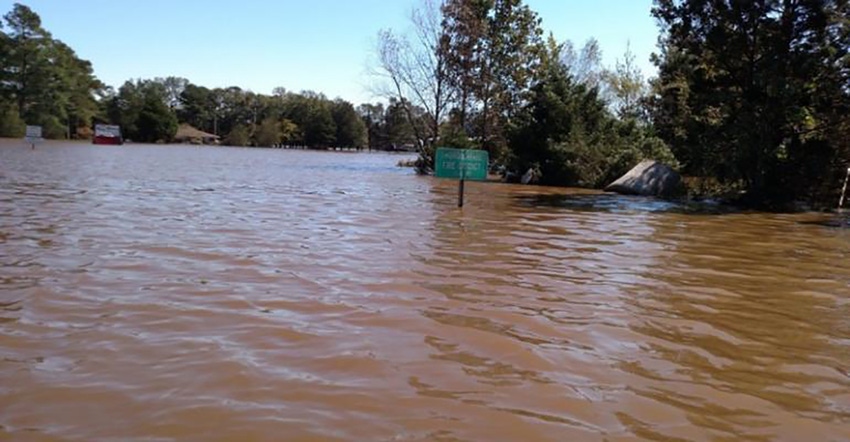NCPC: Watch out for fake news surrounding Hurricane Florence
In the days leading up to and then following Hurricane Matthew, activists sounded repeated alarms about the damage that would result from flooded hog farms.
September 12, 2018

Source: North Carolina Pork Council
The North Carolina Pork Council is urging the public to be aware of misleading narratives when it comes to mainstream coverage surrounding the hog industry and Hurricane Florence. After all, it happened during Hurricane Matthew.
While farmers across the state are working long hours to prepare for Hurricane Florence, the NCPC says there have already been groups working just as hard to damage the state’s pork industry. According to the council, Waterkeeper Alliance, Mercy for Animals and other activist environmental and anti-agriculture groups have already indicated they intend to be out in full force to seize on the storm.
The Waterkeeper Alliance told Time magazine this week that there is potential for spillover from open lagoons to get into water used for drinking or recreation. In the article, Will Hendrick, a staff attorney and manager for a water campaign in the state for the Waterkeeper Alliance, says “Because waste is managed using archaic practices, it presents a significant threat to water quality, primarily through run off and/or breach or inundation of hog lagoons.”
According to the NCPC, this action is nothing new from the activist groups. In the days leading up to and then following Hurricane Matthew in 2016, activists sounded repeated alarms about the damage that would result from flooded hog farms. At one point, the Waterkeeper Alliance even took a group of reporters on flights across North Carolina to get aerial shots of what they claimed were flooded hog farms. The Washington Post fell for it and ended up publishing a photo of the town of Hookerton’s municipal waste water treatment facility, not a hog farm.
The newspaper later retracted the photo.
The NCPC says the truth was North Carolina farmers were well prepared for Hurricane Matthew when it arrived in October 2016. Even with record rainfall, only one lagoon experienced structural damage — and on a farm that had not housed any animals for more than five years. An additional 14 lagoons that were inundated with floodwater — compared to 55 during Hurricane Floyd in 1999 — but more than 3,750 other lagoons avoided any flooding.
As far as death toll, only one farm lost 2,800 pigs in the 2016 storm; not millions as activists tried to claim.
“We urge caution. Beware what they say. It’s already begun, and it is only expected to increase,” the NCPC says. “This is shameful, and a reminder is in order.”
Following Hurricane Matthew, the Division of Water Resources conducted extensive monitoring of waterways across eastern North Carolina. It reached the following conclusion:
“After reviewing the data collected, and comparing that to precipitation amounts, river levels and known areas of flooding, the overall impacts of Hurricane Matthew on surface water quality were initially minimal and temporary, and the long-term effects appear to be similar to previous storms and long-term historical conditions. While many eastern North Carolina areas were inundated by floodwaters and incidents of spills, breaches or waste facility shutdowns were reported, the amount of water discharged into the river basins resulted in a diluting effect, which primarily resulted in lower than normal concentrations of various pollutants.”
“It is precisely in these first hours and days that activists with an agenda seek to exploit the media,” NCPC says. “Our request: Beware of what you hear about hog farms during Hurricane Florence.”
You May Also Like



